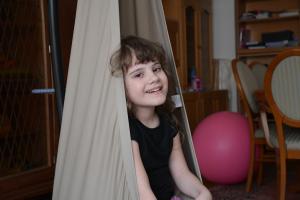Habitat for Humanity and Umdasch Group Extend Partnership to Build More Homes and Empower Communities
Habitat for Humanity strengthens its operations in Ukraine with new branch to support reconstruction and housing needs
A Temporary Solution, A Lifetime of Struggle: The Enduring Challenges of Marka Camp
Marka Camp, also known as Schneller Camp, is located just 10 kilometers northeast of Amman, Jordan. Established in 1968 as a temporary refuge for displaced Palestinian families, the camp was initially intended to offer immediate relief and support for those fleeing conflict. The Jordanian government, in collaboration with the United Nations Relief and Works Agency (UNRWA), sought to provide these refugees with safety and essential services during a period of great uncertainty. However, what was meant to be a short-term solution has, over time, turned into a more permanent reality.
Marka Camp, also known as Schneller Camp, is located just 10 kilometers northeast of Amman, Jordan. Established in 1968 as a temporary refuge for displaced Palestinian families, the camp was initially intended to offer immediate relief and support for those fleeing conflict. The Jordanian government, in collaboration with the United Nations Relief and Works Agency (UNRWA), sought to provide these refugees with safety and essential services during a period of great uncertainty. However, what was meant to be a short-term solution has, over time, turned into a more permanent reality.
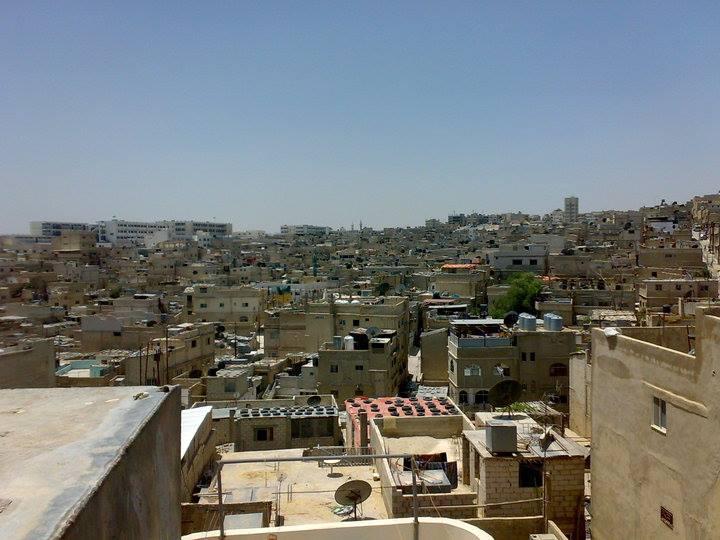
Decades later, the camp remains home to thousands of people. The land, owned by the Jordanian government and leased to UNRWA, allows residents the right to live there—but without the security of ownership. This fragile legal status further complicates the already difficult lives of the camp’s residents.
The prolonged situation, combined with exponential population growth and limited resources, has strained the camp’s infrastructure far beyond its intended capacity. The 2023 census indicated that Marka Camp now hosts more than 68,000 residents in an area of around 917 square meters, equating to only about 0.0135 square meters per person.
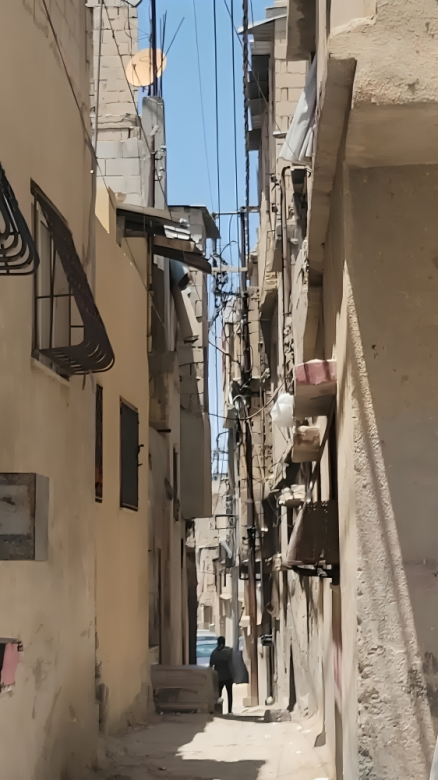
The limited land space has forced residents to build upwards, adding makeshift floors to their homes in a desperate attempt to create more space. This has resulted in a maze of narrow alleys and towering structures, so densely packed that even cars struggle to navigate the camp. These vertically expanding homes still operate on the original water and electricity systems, designed only for the initial single-story buildings. The increased demand from multiple floors strains these outdated systems, creating significant fire hazards. Additionally, the water supply is insufficient for the growing population, leading many families to experience frequent water shortages, further compounding their daily struggles.
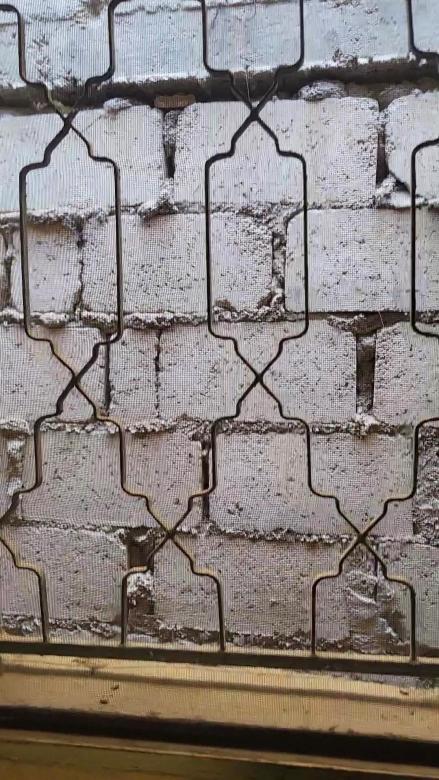
The lack of space has also led to poor ventilation. Homes are crowded together, separated by thin walls, which trap heat, moisture, and air pollution, creating unhealthy living conditions that impact the residents’ health.
Among the camp’s residents, Gazan refugees face particularly harsh challenges. Unlike many Palestinian refugees in Jordan who have been granted citizenship, Gazans live in a legal limbo. They cannot own property, legally register businesses, or work in many professions. These restrictions severely limit their potential to build stable, secure lives, making it even harder for them to find a way out of the difficult conditions in the camp.
The living conditions in Marka Camp are dire. Many homes lack proper roofs, relying instead on old, deteriorated materials that do little to protect against the elements. During winter, heavy rains flood these homes, turning them into uninhabitable spaces.
Nour, a mother of eight, knows this struggle all too well. Her small, two-bedroom home becomes a flooded ruin every winter, forcing her family to move in with her mother-in-law. The constant dampness has led to rampant mold growth, leaving her children frequently sick and unable to attend school. The mold and poor ventilation in her home are constant reminders of the inadequate conditions that plague so many in the camp.

Then there’s Um Abdelrahman, the camp’s beloved matchmaker. Known for connecting bachelors and bachelorettes in the community, she is a lifeline for many seeking companionship. Yet, her own home is in desperate need of repair. The ceiling of her bathroom, burdened with the weight of a water tank, is on the brink of collapse. She has tried to prevent disaster with handmade wooden supports, but the situation remains critical. Mold infests the bathroom, and the door doesn’t even lock properly, robbing her of privacy and safety.
During a visit by the Habitat for Humanity team, Um Abdelrahman shared her concerns about the challenges faced by Gazans, especially young men. Aside from the everyday obstacles they face, they are also seen as undesirable bachelors because of their lack of citizenship privileges in Jordan. She said that even women from Gaza hesitate to marry within their community, knowing that marrying a Jordanian national offers a path to a better future for their children—a path that Gazan men cannot provide. This stigma adds another burden to the already heavy load carried by Gazan refugees, preventing them from living a normal life.
The team at Habitat for Humanity Jordan is actively conducting field visits in Marka Camp to assess the current conditions of homes and determine the most urgent needs. These assessments are critical to ensuring that the renovations bring the homes up to decent housing standards. The scope of the renovations will vary depending on each home’s condition, addressing issues such as mold remediation, installation of new windows and doors, roofing repairs, upgrades to WASH (Water, Sanitation, and Hygiene) facilities, and pipe fittings, to name a few.
Beyond the physical renovations, the Home Equals project is deeply committed to engaging with the community. Town hall meetings will be held to gather input from residents, allowing them to voice their concerns and highlight their most pressing needs. These meetings are crucial in ensuring that interventions are not just top-down decisions but are truly reflective of the community’s priorities.
Based on the recommendations and needs identified in these meetings, Habitat for Humanity will tailor its interventions to ensure they serve the community effectively.
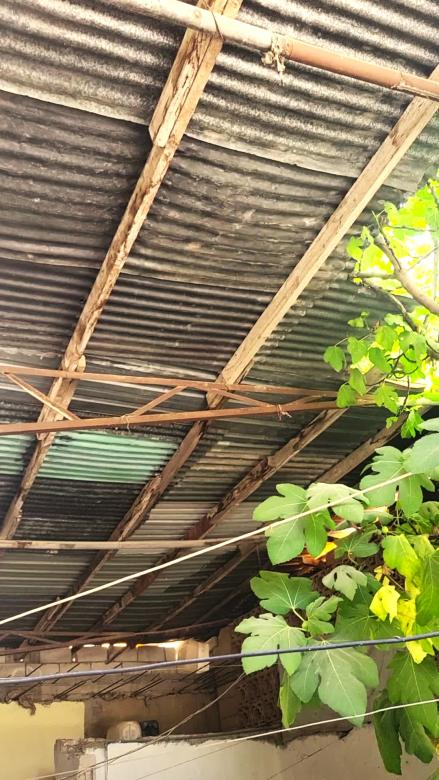
In addition to these renovation efforts, the project is also advocating for critical policy changes regarding buildings and homes for camp residents. By pushing for legal recognition, residence rights, and more climate resilience, the project aims to provide these families with security and stability.
Marka Camp stands as a testament to the resilience of Palestinian refugees, particularly those from Gaza. Overcrowded and crumbling, the camp embodies the struggles of a community that has been marginalized and neglected. The Home Equals project aims to improve the living conditions for those who have endured unimaginable hardship for far too long, helping them realize a future where they can dream of a brighter tomorrow.
A Temporary Solution, A Lifetime of Struggle
AUGUST 29, 2024

A Sanctuary for Refugees to Rebuild and Thrive
Located in the tranquil natural environment of Kiskunság, Hungary, sits Strazsa Tanya, a guesthouse and ranch. The property is named after the nearby Strázsa “mountain,” making it the perfect place to escape. After the Ukrainian invasion broke out, the facility transformed itself into a sanctuary for Ukrainian refugees, particularly those with disabilities and other cumulative disadvantages. Since then, the ranch has provided not only temporary shelter but also a pathway to rebuilding lives.
Located in the tranquil natural environment of Kiskunság, Hungary, sits Strazsa Tanya, a guesthouse and ranch. The property is named after the nearby Strázsa “mountain,” making it the perfect place to escape. After the Ukrainian invasion broke out, the facility transformed itself into a sanctuary for Ukrainian refugees, particularly those with disabilities and other cumulative disadvantages. Since then, the ranch has provided not only temporary shelter but also a pathway to rebuilding lives.

Strazsa Tanya
Two weeks after the Ukrainian invasion began, Strazsa Tanya started welcoming handicapped refugee families. The ranch’s mission quickly expanded to include those facing a range of cumulative disadvantages—children without parents, single mothers, individuals with physical or mental disabilities, and those who are illiterate. The center provided these refugees with essential in-kind donations and carried out much-needed renovations to create a safe and welcoming environment for them. Through their partnership with Habitat for Humanity, Strazsa Tanya has been able to help more than 200 Ukrainian refugees rebuild their lives in Hungary.
The philosophy is rooted in their belief that vulnerable groups can only recover and rebuild their lives in a nurturing and supportive environment. The ranch provides safe shelter and a comprehensive support system, including ongoing care even after families move on from the ranch. This approach ensures that these families not only survive but thrive as they transition to independence.
“We start by offering accommodation at the ranch, followed by ongoing support at our community center, Fészek (Nest),” explains Bea Nemetne Horvat, CEO of Strazsa Tanya. “As families regain their strength, they transition to the next phase of their journey—whether that’s finding a job or accessing specialized education for their children. Even after they leave the ranch, we continue to support them. Habitat for Humanity has been instrumental in this process, helping us furnish homes and provide necessary household items for families as they move into their new lives.”
The journey to expand Strazsa Tanya’s reach has been challenging, but in 2023, they reached a significant milestone with the opening of the Fészek (Nest) community center. The Nest was created to provide a safe and nurturing space where disadvantaged refugees could recover, develop, and prepare for the next steps in their lives. It also serves as a hub for collaboration with other NGOs.
Despite delays caused by high winter bills, the Nest is now a thriving center where children can study, play, and grow while their parents work. The daycare and educational programs offered at the Nest have been life-changing for many families, enabling parents to secure employment and providing children with the support they need to thrive.
The Nest has also become a source of employment for residents. “Our community has evolved,” Bea says. “We now have more elderly residents, and some of them have found joy in creating beautiful handicrafts at the center, which we help market. Two Ukrainian women have also taken on part-time administrative roles.”
However, the greatest impact has been on the children. Each afternoon and weekend, special education teachers engage them in activities that promote learning and development. The beloved Miss Judit helps the children with their homework and ensures they have a safe and supportive environment until their parents can pick them up.
During the summer holidays, the Nest organizes camps for the children, providing them with a space to learn, play, and explore. This support has allowed many refugee children to get closer to their dreams.
“For instance, Erik, a kindergarten student, rests at the Nest while his sisters, Amira and Jazmin, do their homework. Their oldest sister, Kamilla, has made significant progress since joining us, and she was recently accepted into her dream high school. She aspires to work in National Defense,” Bea shared proudly.
This family recently transitioned from the ranch to a rented apartment, marking the beginning of their new, independent life. Both parents found jobs, and the children are thriving in school as they settle into their new home and rebuild their lives.
A Sanctuary for Refugees to Rebuild and Thrive
AUGUST 26, 2024
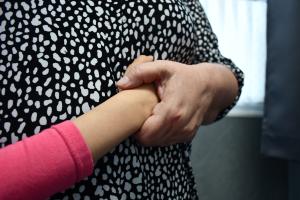
Green Building: Closing the Gap in Youth Employment
Africa is home to the world’s youngest population, with almost 200 million people aged between 15 and 24. Alarmingly, approximately 72 million of these young people—primarily young women—are not in education, employment, or training (NEET), according to the International Labour Organisation.
Africa is home to the world’s youngest population, with almost 200 million people aged between 15 and 24. Alarmingly, approximately 72 million of these young people—primarily young women—are not in education, employment, or training (NEET), according to the International Labour Organisation.
In Kenya, the Federation of Kenya Employers (FKE) further states that this NEET category makes up 40% of the workforce and 60% of Kenya’s unemployed active labor force. Although the overall unemployment rate in Kenya stands at 12.7 percent, the highest rate—67%—is among the youth (15- to 34-year-olds), who represent 35% of the population.
This staggering youth unemployment in Kenya and other African countries can be attributed to societal and cultural norms, especially in male-dominated industries like the construction industry, where youth comprise only 35% of the workforce, while women represent just 10%. Yet, the housing and construction sector provides an excellent opportunity to bridge the unemployment gap by providing decent employment opportunities. However, the industry is often characterized by informality, with millions of young people entering the labor market annually without the necessary skills, and where gender inclusivity remains a significant challenge.
In response, Habitat for Humanity, through its Terwilliger Center for Innovation in Shelter (TCIS), is fostering green growth in Kenya’s housing sector. This initiative focuses on building an inclusive and skilled construction labor market by supporting and engaging youth and women. By scaling green job opportunities in home construction for Kenyan youth, this project will also contribute to sustainable economic development in several communities.
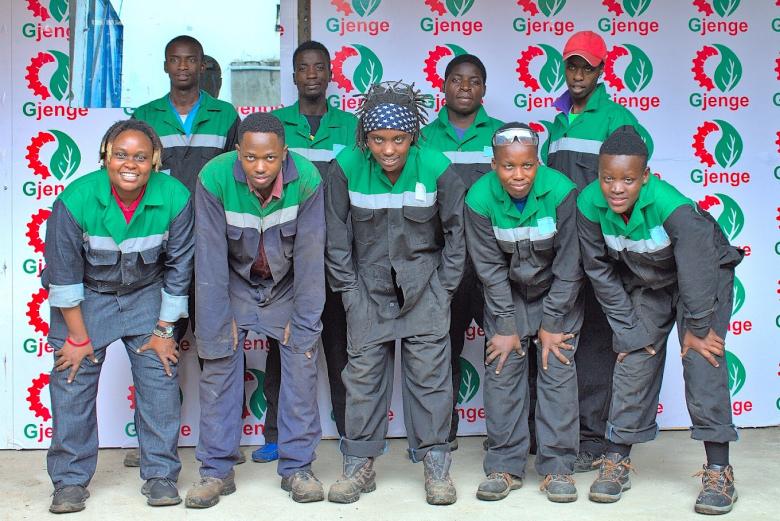
Group photo of Gjenge Makers
Habitat for Humanity’s “Driving Green Growth in the Construction Sector” project, funded by the Dutch government through the Challenge Fund for Youth Employment (CFYE), is a three-year project (2021-2024) that aims to create, match, and improve over 900 green jobs for young people in the housing and construction sector. Notably, 34% of the jobs will be allocated to women.
The project aims to increase the demand, supply, and use of green housing products and services and increase the meaningful participation of women and young people in the construction sector. To achieve these objectives, TCIS has partnered with Gjenge Makers, Mycotile, and The Toolkit iSkills to mobilize young men and women to receive training on renewable energy technology skills and collecting, packing, and processing agricultural and plastic wastes.

Youth receiving internationally recognized certifications in technical skills at a graduation ceremony at the Toolkit Skills and Innovation Hub, June 2024
The impact of this project is already being felt:
- 760 youth and women reached, with 206 women securing decent jobs with wages above Kenya’s minimum of KES 15,201 (US$120) per month —marking a significant step towards gender equality in the sector.
- Over 750 youth trained in soft and employability skills.
- 252 youth certified by the National Industrial Training Authority (NITA), National Construction Authority (NCA), and Dig In Vision International on welding and solar installation skills.
- 280 youth trained in collecting, sorting, and packaging plastic and agricultural wastes for reuse into sustainable construction materials.
- Over 500 youth trained in renewable energy technical skills (welding, solar technology, plumbing, and electrical wiring).
To ensure sustainability, project partners are also receiving support in implementing safeguarding measures; developing and implementing business plans; and developing and implementing gender, women, and youth guidelines and procedures to enhance the engagement of youth and women in the construction sector.
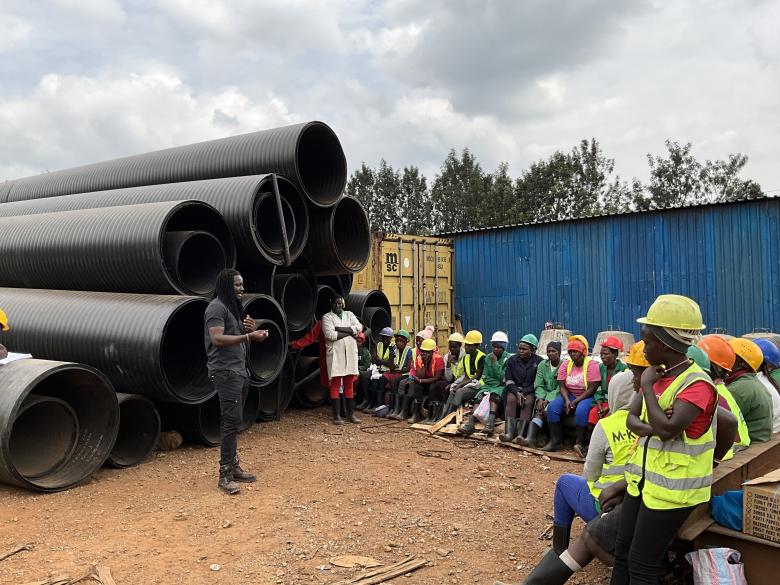
Mtamu Kililo, CEO, MycoTile Ltd leading a training for youth and women
“Empowering youth and women in the construction sector is not just about building structures; it’s about building a sustainable future,” says Joshua Kangogo, Project Coordinator at TCIS.
“By driving green growth, we are laying the foundation for inclusive innovation that will shape tomorrow’s world, one that thrives on diversity and environmental protection.”
As we celebrated International Youth Day earlier this month, it is crucial to recognize that every solution, however small, plays a vital role in addressing the unemployment crisis.
The next 20 years will be critical for the construction industry as emerging economies invest in infrastructure to meet growing housing demand. To meet this challenge, laborers will need to be (up) skilled, enabling them to take on the growing housing demand and lead in driving green growth.
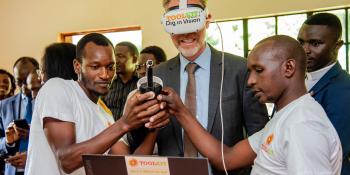
Green Building: Closing the Gap in Youth Employment
Habitat for Humanity and Grundfos Forge Global Partnership to Address Housing and Water Challenges in Brazil
The Home Equals Project in Macedonia: The Salievski Family's Journey to Legalizing Their Home
In Shuto Orizari, a culturally rich municipality in North Macedonia, lives the Salievski family. This area is known for its vibrant Roma community, which has faced significant social and economic challenges over the years. The family consists of Senad Salievski, his wife Elvira, their three sons aged 9, 12, and 14, and their 4-year-old daughter. Despite the odds, Senad is determined to provide a better life for his family.
In Shuto Orizari, a culturally rich municipality in North Macedonia, lives the Salievski family. This area is known for its vibrant Roma community, which has faced significant social and economic challenges over the years. The family consists of Senad Salievski, his wife Elvira, their three sons aged 9, 12, and 14, and their 4-year-old daughter. Despite the odds, Senad is determined to provide a better life for his family.
Senad works as a cashier at the City Casino to support his family. Although he holds a high school diploma in machining from “Vlado Tasevski,” he has struggled to find employment as a mechanic due to limited job opportunities. In Shuto Orizari, where unemployment rates are high and housing conditions are often inadequate, these challenges are all too familiar.
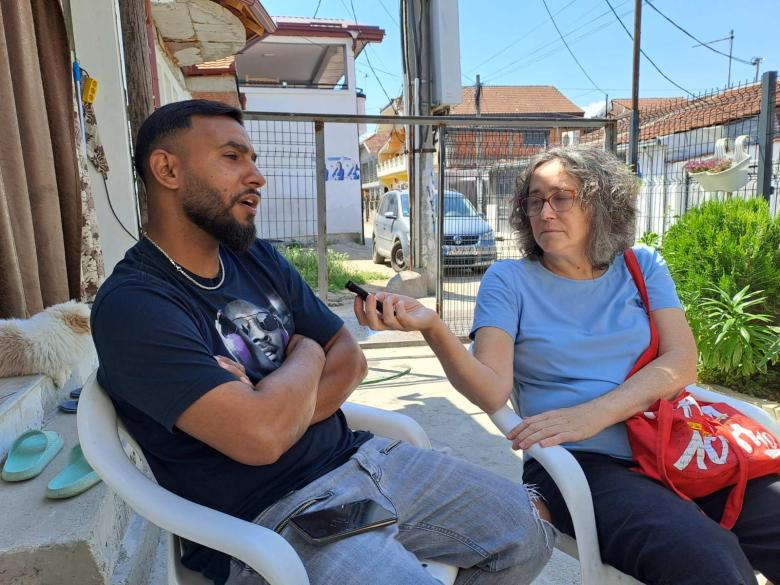
Senad’s journey is further complicated by the prejudice and exclusion he faces as a member of the Roma community. Historically, the Roma people have encountered significant barriers to accessing education, employment, and housing. This systemic discrimination creates obstacles that prevent Senad from reaching his full potential despite his skills and training.
As the primary breadwinner for his family of six, Senad shoulders the responsibility alone. His wife, Elvira, hasn’t been able to secure stable work, despite her eagerness and willingness. Despite all of this, the family’s perseverance is outstanding. Senad and Elvira are relentless in their efforts to improve their living conditions and provide a better life for their children.
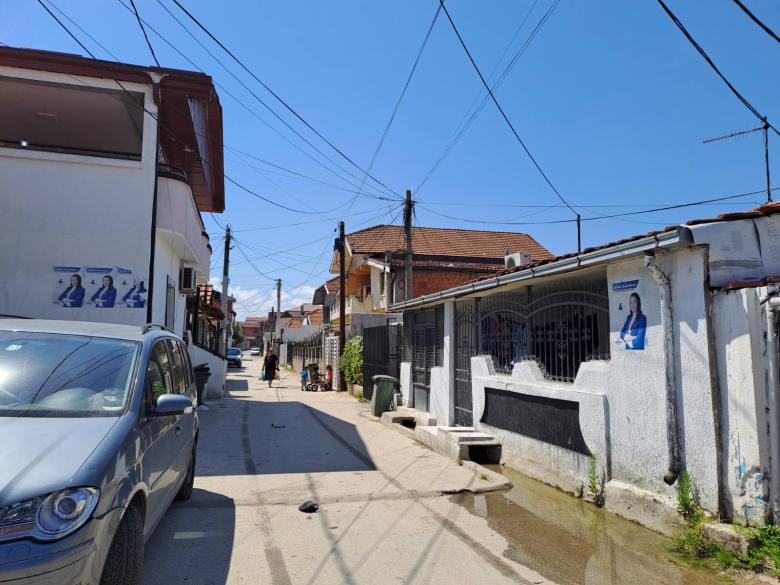
Reflecting on his childhood, Senad says, “My family was extremely modest. My parents, despite their efforts, were unable to buy basic necessities. Things like shoes and socks were unattainable for me and my siblings. During my high school education, I had to rely solely on copying notes from the blackboard because we couldn’t afford textbooks.” Despite these challenges, Senad was able to finish high school, and these experiences fuel his determination to provide a better future for his children.
The Salievski family lives on a piece of land generously given by Elvira’s father. Their house sits in the same yard where Senad’s grandfather resides. With the support of their extended family, they were able to build a 54-square-meter home. However, the house requires significant improvements for decent living. The family faces harsh winters with no insulation, relying on a single heated room to stay warm. The house lacks a facade, and crucial work like installing polystyrene insulation and gutters remains unfinished.
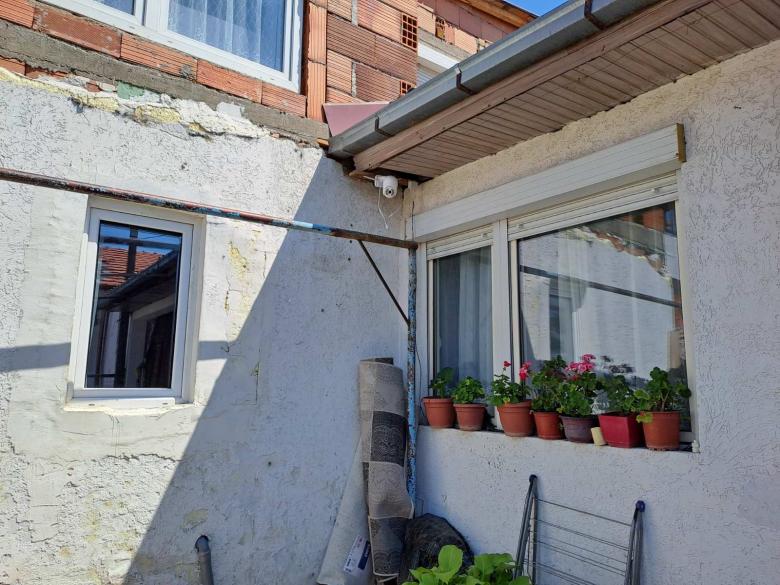
These improvements are critical for the family’s living conditions. Polystyrene insulation keeps the house warm in winter and cool in summer, making the home more energy-efficient and reducing heating costs. Proper gutter installation is essential for preventing water damage and protecting the foundation. Without these improvements, the home becomes extremely vulnerable to weather and environmental damage.

Furthermore, their house isn’t formally legalized, adding another layer of challenges and preventing the family from accessing basic services like housing loans and public services. But with the support of Habitat for Humanity Macedonia’s office and the Home Equals project, the family was able to formally legalize their home. This step empowers the family, giving them legal rights and access to basic services.
“Legalizing my house is the first step towards making our home a place of warmth and security. I am determined to give my children a better life, and with this support, I am one step closer to that dream.”— Senad Salievski
As our team in Macedonia left Senad’s house, it was filled with children’s laughter that echoed in the air. Their perseverance is a true testament to community support and involvement, standing together to overcome adversity one step at a time.

Click here to learn more about our Home Equals project and sign the pledge to help people living in informal settlements have equitable access to adequate housing
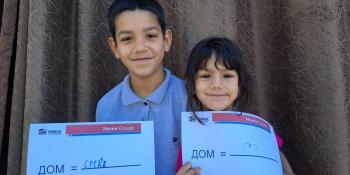
The Home Equals Project in Macedonia. The Salievski Family's Journey to Legalizing Their Home
AUGUST 4, 2024
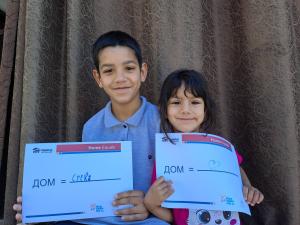
A Swing Toward Normalcy: A Ukrainian Girl’s Journey to Finding Peace Again
Waiting at the door with eyes filled with curiosity, 11-year-old Veronika greeted our Habitat for Humanity Hungary team as they arrived to install her brand new drop swing. For Veronika, who lives with autism, consistency and security are crucial. Having fled from Ukraine and endured the torment of war, the drop swing is more than just a piece of furniture; it’s a sanctuary where she can retreat when life becomes overwhelming.
Waiting at the door with eyes filled with curiosity, 11-year-old Veronika greeted our Habitat for Humanity Hungary team as they arrived to install her brand new drop swing. For Veronika, who lives with autism, consistency and security are crucial. Having fled from Ukraine and endured the torment of war, the drop swing is more than just a piece of furniture; it’s a sanctuary where she can retreat when life becomes overwhelming.
The past two years have been incredibly challenging for Veronika and her mother, Viki. As a single mom, Viki had to make the difficult decision to flee Kyiv after the Russian bombings began. Initially, she believed the war would be temporary and stocked their apartment with essential items. However, on March 8th, it became clear they had to leave. “I looked out the window in horror, seeing people frantically packing their belongings like thousands of ants. Everyone wanted to escape,” Viki recalls. In a panic, they left Kyiv with just a suitcase and a backpack, leaving behind everything familiar to Veronika and witnessing the destruction of Hostomel airport on their way.
They initially sought refuge with Viki’s mother outside Kyiv, but soon the shelling followed. A rocket even landed in a neighbor’s yard, forcing them to hide in a basement in freezing temperatures for three days. This was far from ideal for Veronika, whose condition required stability and consistency.
Determined to find a safe and stable environment, Viki sought a long-term solution and found a suitable place in Lviv. However, bombing soon reached there as well. Panicked, she decided to head to Poland and then to Georgia, but long waits at the border led her to change plans and head to Hungary.
Their goal was Budapest, knowing the city had the resources Veronika needed. Initially, they were placed in a temporary shelter far from the city, feeling isolated and misunderstood due to the language barrier. “In the first days, I just cried. The uncertainty with a child was the most difficult thing for me. Everything was foreign: the people, the language, the environment. I didn’t know anything or anyone and couldn’t talk to anyone. I felt so alone. No one understood that my daughter had special dietary needs, nor did they let me into the kitchen. Veronika could not eat anything, and I didn’t know what to do. One night, a Ukrainian couple arrived at the shelter. I cried even louder, but this time because of happiness. We weren’t alone anymore.”
Over time, Viki began making plans again. She searched for schools and suitable housing in Budapest but faced numerous rejections due to their refugee status and Veronika’s autism. Eventually, a compassionate Russian lady helped them find an apartment, arranging everything for them. This marked a new beginning for Viki and Veronika.
“The moment we secured the apartment, I felt a huge sense of relief and safety!” Viki recalls. “This chance for a new beginning gave me the strength to keep going. I don’t want to remember the hopelessness of sitting and waiting helplessly.”
In addition to the swing, Habitat for Humanity Hungary also provided household appliances to support Veronika’s special dietary needs. Veronika has started attending school, and Viki is persistently seeking employment. She is hopeful for the future because, for so long, her goal was to find stability. Now that she has found it, she and her daughter can begin rebuilding the life they lost in Kyiv.
A Swing Toward Normalcy. A Ukrainian Girl’s Journey to Finding Peace Again
JULY 25, 2024
